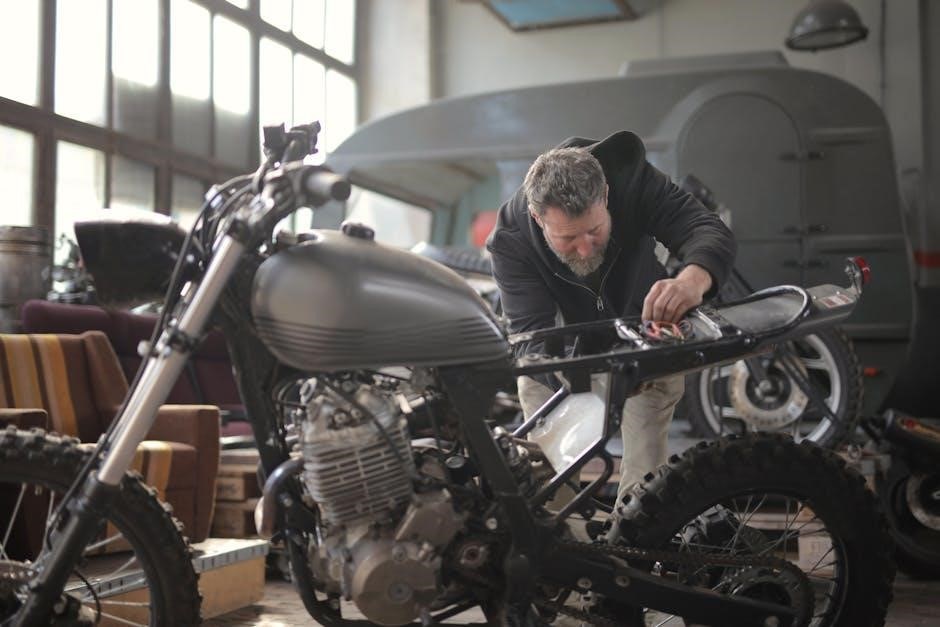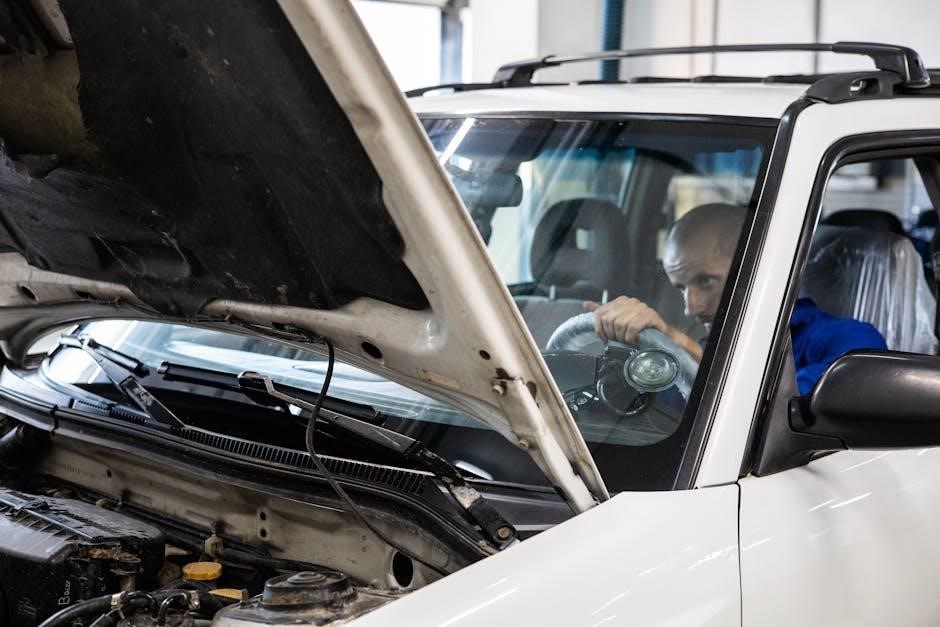Central Service Technical Manual: A Comprehensive Guide
The Central Service Technical Manual is a vital resource for Central Service professionals. It provides the knowledge and skills required for effective technicians. The manual covers job responsibilities, career growth, and department organization. It’s often paired with a workbook for better understanding.
Central Service Departments (CSD), also known as Sterile Processing Departments, are the heart of healthcare facilities. They play a crucial role in preventing infections and ensuring patient safety. These departments are responsible for cleaning, disinfecting, and sterilizing medical devices, instruments, and equipment used in various clinical settings.
The primary function of a CSD is to provide sterile supplies to operating rooms, clinics, and other patient care areas. This involves a complex process that requires specialized knowledge and skills. Technicians in these departments must understand sterilization principles, infection control practices, and equipment operation.
The efficient operation of a CSD is essential for maintaining a safe and sterile environment within a healthcare facility. A well-organized and properly equipped CSD can significantly reduce the risk of healthcare-associated infections (HAIs). These departments adhere to strict guidelines and regulations to ensure the highest standards of cleanliness and sterilization.
The Central Service Technical Manual serves as a comprehensive guide for professionals working in these critical departments. It provides the necessary information and practical guidance to perform their duties effectively and contribute to patient safety.
Core Responsibilities of Central Service Technicians
Central Service Technicians are the backbone of sterile processing, shouldering vital responsibilities that directly impact patient safety. Their core duties encompass a wide range of tasks, all crucial to maintaining a sterile environment within healthcare facilities. These responsibilities begin with the meticulous decontamination of used medical instruments and equipment, removing potentially infectious materials.
Following decontamination, technicians inspect instruments for damage and functionality, ensuring they meet stringent quality standards. Proper assembly of instrument sets is another key responsibility, guaranteeing surgeons have the necessary tools readily available. Sterilization processes are at the heart of their work, utilizing autoclaves and other sterilization equipment to eliminate all microorganisms.
Technicians also manage inventory, ensuring adequate supplies of sterile instruments and equipment are always on hand. Documentation is paramount; they maintain detailed records of sterilization cycles and equipment maintenance. Furthermore, they adhere strictly to infection control protocols and safety guidelines to protect themselves and prevent contamination.
Continuous learning and professional development are essential, requiring technicians to stay updated on the latest sterilization techniques and best practices. The Central Service Technical Manual is their constant companion, providing the knowledge and guidance needed to excel in these critical roles.
Essential Knowledge and Skills for Technicians
Central Service Technicians require a comprehensive understanding of various scientific and technical principles. A solid grasp of microbiology is crucial, enabling them to comprehend the nature of microorganisms and the methods used to eliminate them. Knowledge of sterilization principles, including different sterilization methods and their effectiveness, is paramount. Understanding disinfection and decontamination processes is equally important for preparing instruments for sterilization.
Technicians must be proficient in the use of various types of sterilization equipment, such as autoclaves and chemical sterilizers. They need to be able to operate and maintain these machines effectively, ensuring proper sterilization cycles. Expertise in instrument identification and assembly is also essential, as is the ability to recognize and address damaged or malfunctioning instruments.
Infection control practices are at the forefront of their skillset, requiring a thorough understanding of hygiene protocols and safety measures. Technicians must be adept at managing inventory and supplies, ensuring adequate stock levels and proper storage. Effective communication skills are vital for collaborating with other healthcare professionals and maintaining accurate documentation.
Finally, continuous professional development is key. Technicians must stay updated on the latest advancements in sterilization technology and best practices, often facilitated through resources like the Central Service Technical Manual and accompanying workbooks.
Department Organization and Workflow
The Central Service Department (CSD) operates as a crucial hub within a healthcare facility, ensuring the availability of sterile instruments and equipment for various medical procedures. Its organization is typically structured around specific functional areas, each contributing to the overall workflow. A receiving and decontamination area serves as the initial point, where used instruments are collected, sorted, and cleaned to remove bioburden. This stage is critical for preventing contamination and ensuring effective sterilization.
Following decontamination, instruments proceed to the preparation and packaging area. Here, they are inspected for damage, assembled into sets, and carefully packaged for sterilization. Proper packaging is essential for maintaining sterility during storage and transportation. The sterilization area houses various sterilization equipment, such as autoclaves and low-temperature sterilizers, where instruments undergo validated sterilization cycles to eliminate all microorganisms.
After sterilization, instruments are transferred to the sterile storage area, where they are stored in a controlled environment to maintain sterility until needed. Finally, the distribution area manages the delivery of sterile instruments and equipment to various departments within the healthcare facility, ensuring timely access for medical procedures.

Effective communication and collaboration between these functional areas are vital for a seamless workflow. The Central Service Technical Manual often provides detailed guidance on optimizing department organization and workflow for maximum efficiency and patient safety.

Sterilization Principles and Practices
Sterilization is a critical process in Central Service, aimed at eliminating all viable microorganisms from medical devices and instruments. It’s a higher standard than disinfection, which only reduces the number of microorganisms. The Central Service Technical Manual emphasizes understanding the fundamental principles of sterilization, including the factors that influence its effectiveness, such as temperature, pressure, time, and the presence of organic matter.
Different sterilization methods are employed depending on the type of material being sterilized and the healthcare facility’s resources. Steam sterilization, using autoclaves, is a widely used method for heat-stable items. It involves exposing items to high-pressure saturated steam at specific temperatures for a defined period. Ethylene oxide (EtO) sterilization is used for heat-sensitive items, but it requires a lengthy aeration process to remove toxic EtO residuals.

Low-temperature sterilization methods, such as hydrogen peroxide gas plasma and peracetic acid immersion, are also used for heat-sensitive items. These methods offer faster turnaround times compared to EtO sterilization. The manual stresses the importance of following validated sterilization cycles and adhering to strict quality control measures to ensure the effectiveness of the sterilization process.
Proper packaging and loading techniques are also crucial for ensuring that the sterilizing agent reaches all surfaces of the items being sterilized. Regular monitoring and testing of sterilization equipment are essential to verify its performance and prevent sterilization failures.
Equipment and Supplies Management
Effective equipment and supplies management is paramount in a Central Service department. This involves a systematic approach to procuring, storing, distributing, and tracking medical instruments, equipment, and consumable supplies. The Central Service Technical Manual emphasizes the significance of maintaining an adequate inventory to meet the demands of surgical procedures and patient care activities. Proper inventory control minimizes stockouts and reduces the risk of using expired or damaged items.
A key aspect of equipment management is ensuring that all instruments and equipment are properly cleaned, inspected, and maintained in accordance with the manufacturer’s recommendations. This includes routine maintenance, calibration, and repair of equipment to ensure its optimal performance and longevity. The manual also highlights the importance of tracking equipment usage and maintenance history to identify potential problems and prevent equipment failures.
Efficient supply chain management is essential for minimizing costs and ensuring the timely delivery of supplies. This involves establishing relationships with reliable vendors, negotiating favorable pricing, and implementing effective ordering and receiving procedures. The manual also stresses the importance of proper storage and handling of supplies to prevent damage, contamination, and deterioration.
Central Service technicians play a crucial role in managing equipment and supplies. They are responsible for inspecting incoming supplies, verifying their quality, and storing them in designated locations. They also assist in distributing supplies to various departments and maintaining accurate inventory records.
Career Growth and Professional Development
Career growth and professional development are crucial aspects for Central Service Technicians. The Central Service Technical Manual emphasizes continuous learning to enhance skills and knowledge. Technicians should actively seek opportunities to expand their expertise in sterilization, disinfection, and instrument processing. This involves participating in workshops, seminars, and conferences related to central service practices.
Certification is a key component of professional development. Obtaining certifications demonstrates competency and commitment to the profession. The manual often highlights certification pathways and requirements, encouraging technicians to pursue advanced certifications. Mentorship programs can also play a significant role, providing guidance and support from experienced professionals in the field.
Staying updated with the latest industry standards and guidelines is essential. Technicians should regularly review publications from organizations like IAHCSMM. Participating in professional organizations offers networking opportunities and access to valuable resources. Leadership roles within the department or in professional associations can further enhance career growth.
The Central Service Technical Manual serves as a foundational resource for technicians seeking to advance their careers. It equips them with the knowledge and skills necessary to excel in their roles and contribute to patient safety. Continuous learning and professional development are vital for remaining competitive and providing high-quality service.
Understanding the Technical Manual and Workbook

The Central Service Technical Manual is a comprehensive guide designed for Central Service professionals, offering essential knowledge and skills. It delves into sterilization principles, equipment management, and department workflow. The manual serves as a foundational resource for understanding the intricacies of sterile processing, ensuring technicians are well-versed in industry best practices and standards.
The Central Service Technical Workbook complements the manual by providing practical exercises and quizzes. This workbook reinforces learning and helps technicians gauge their comprehension of key concepts. Chapter-by-chapter practice quizzes and progress tests make it an invaluable tool for self-assessment and skill development. Using the workbook alongside the manual enhances knowledge retention and application.
Together, the manual and workbook form a comprehensive learning system. They provide a structured approach to mastering the complexities of central service. Technicians can use this combination to identify areas needing improvement and strengthen their understanding of critical procedures. The manual provides the theoretical framework, while the workbook offers hands-on practice;
Effectively utilizing both resources is key to success in central service. The manual is the go-to reference for detailed information, while the workbook is the tool for active learning and skill refinement. Understanding how to use each component maximizes learning outcomes and professional competence.
Importance of the Study Guide
The study guide accompanying the Central Service Technical Manual is critical for success in central service education. It serves as a focused tool to reinforce key concepts and prepare for certification exams. Unlike the comprehensive manual, the study guide provides targeted reviews and practice questions. These resources are designed to solidify understanding and improve test-taking skills.
The study guide complements the manual by offering a structured approach to learning. It breaks down complex topics into manageable sections. This allows students to systematically review the material. Practice quizzes and tests mirror the format of certification exams. This helps familiarize students with the types of questions they will encounter.
Many find it impossible to succeed in central service courses without the study guide. Its focused content and practice questions provide essential support. The study guide ensures students grasp the core principles and procedures. This is vital for effective performance in the field.
Investing in the study guide is an investment in your professional development. It is a pathway to certification and career advancement. The study guide boosts confidence and reduces test anxiety. It prepares you to excel in your central service career. It is an indispensable tool for achieving your goals.
Latest Edition Updates and Changes
The latest edition of the Central Service Technical Manual incorporates significant updates reflecting current best practices and evolving industry standards. These changes address advancements in sterilization techniques, equipment management, and infection control protocols. Central Service professionals must stay informed about these updates to ensure compliance and optimize patient safety.
Key updates often include revised guidelines for reprocessing complex surgical instruments and new recommendations for handling emerging pathogens. The manual reflects changes in regulatory requirements, such as those from AAMI and other governing bodies. Content regarding tracking and tracing systems for medical devices is updated.
The latest edition emphasizes the importance of evidence-based practices. It incorporates the most current research on cleaning, disinfection, and sterilization. Chapters on quality assurance and risk management are updated to reflect contemporary approaches. These updates enable Central Service Technicians to minimize errors and improve efficiency.
Staying current with the latest edition ensures professionals possess the knowledge to perform their duties competently. The updates are essential for maintaining certification. They also contribute to a culture of continuous improvement. Reviewing the latest changes is critical for providing safe and effective patient care.
Finding and Purchasing the Manual
Acquiring the Central Service Technical Manual, along with its accompanying workbook, is a crucial step for professionals in the field. Typically, the most reliable way to obtain the manual is directly through the publishing company or authorized distributors. This ensures you receive the latest edition, free from unauthorized modifications or inaccuracies.
Many educational institutions and training programs incorporate the manual into their curriculum. Students enrolled in such programs often receive the manual as part of their course materials. Alternatively, online retailers such as Amazon.com may offer the manual, but it’s essential to verify the edition number and seller reputation.
When purchasing, consider the boxed course, which includes both the textbook and the workbook. The workbook is a valuable tool for reinforcing concepts and gauging understanding. Be wary of significantly discounted or used copies, as they may be outdated or incomplete. Investing in a new, official copy guarantees access to the most current and accurate information.
Libraries may offer access to the manual, though availability may be limited. Check with professional organizations like IAHCSMM for potential discounts or bundled offers. Prioritize purchasing from reputable sources to ensure you have the resources necessary to succeed.
